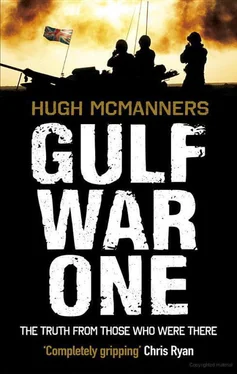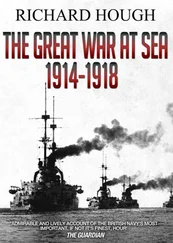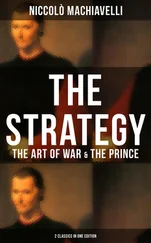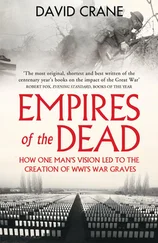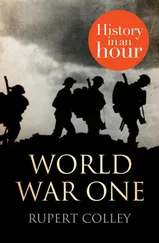Would the UK be capable of conducting an operation such as that of the first Gulf War in the future? Our forces are at least a third smaller than they were in 1990 and, as I write this, we face a defence review that promises swingeing cuts to both manpower and equipment. We do not have and will not have the supporting organisations and logistical reach to maintain our equipments in the field. We should also remember that while we defeated Saddam’s army and liberated Kuwait we did not end his rule. The conflict may have ended, but the fundamental confrontation with Saddam Hussein continued until 2003, involving humanitarian operations in Kurdistan, UN Sanctions and inspections and the enforcement of the No Fly Zones established over North and South Iraq, which some argue continues to this day, albeit in another form. Could we sustain such a thirteen-year deployment in the future?
I am always conscious that retelling events is not the same as living them. There is a certainty that creeps into recollection, whereas in fact at the time nothing was certain, especially the outcome. This is particularly the case in war and battle – times of great uncertainty where facing the unexpected becomes routine, and a mixture of excitement and apprehension are the dominant emotions. But despite my mistrust of my own memory and that of others, there is much to be learned – and enjoyed – from these memories. Of course, for some of our number and their relatives, the operation of 1990–91 has not ended. Mercifully we had few killed and physically wounded; although for those who are bereaved or incapacitated the loss is no less just because few have suffered it. But, as this book tells, there are others whose memories of these events are as disturbing, uncertain and shocking as the event itself. Memory being so personal it can be difficult to share these thoughts with others, particularly because in modern warfare we operate in small groups dispersed over a wide area. So I hope this book is a help to all who have yet to reach the end of Operation Granby.
For my part I wish all those who served with me at that time all the best of good fortune.
General Sir Rupert Smith KCB DSO OBE QGM September 2010
Iraq president Saddam Hussein invaded the sovereign Arab emirate of Kuwait in August 1990. His Soviet-equipped tank army was the fourth largest in the world. But Saddam failed to predict the enormous and unprecedented military response that would ensue, from a remarkable and surprising coalition of Arab and European nations and military forces under United States command.
The US Marines landed fully equipped forces into Saudi Arabia with remarkable speed, and within a month, supported by coalition air force squadrons, felt able to contain further Iraqi attacks into the Saudi oilfields, although heavily outnumbered. Concurrently, the rapidly-forming coalition armies were despatching heavy armour by sea for the Gulf, taking up most of Saudi Arabia’s considerable port and airfield facilities.
With coalition armoured ground forces still arriving and training in theatre, and Saddam Hussein having reneged on many withdrawal offers, the six-week air war began. Aided by Special Forces on the ground, coalition air forces removed the threat of Saddam’s air defences and aircraft, many of his chemical, nuclear and biological weapons facilities, and reduced his ability to command his troops. Then before the coalition forces crossed the border for the ground war, artillery and strike helicopters attacked Iraqi ground forces in Kuwait. A deception plan, by which the US Navy and Marines were poised to make an amphibious landing along the eastern coastline into Kuwait City, diverted tens of thousands of Iraqi troops, and succeeded in persuading the others to expect attacks from the wrong directions, digging less effective defensive positions. These highly coordinated preparations, and then the high tempo, unprecedented concentration of artillery, rapid movement and deep strike of the eventual ground attack, routed the Iraq army, which Saddam withdrew once he realised he would otherwise lose them.
In researching this book, I was very surprised at the lack of understanding and appreciation by senior politicians of the way this war had been planned and fought. Some senior military people, not directly involved, were equally ignorant. Their general thesis was that this was ‘the war that never happened’, with modern forces rounding up huge numbers of hapless, ragged, ill-equipped troops – ‘old men and young boys’. This was, in fact, the first war of the technological era, and possibly the last tank war, in which the coalition fielded and fought the largest armoured formation in military history with some 400 more tanks than the German Expeditionary Force which fought Operation Zitadelle in the Kurst salient in 1943, which is generally considered history’s largest tank battle.
As with Iraq’s earlier eight-year conflict with neighbouring Iran, Saddam’s generals had used largely static First World War tactics; these were totally ineffective against extremely rapid British and American deep-strike attacks using the world’s most advanced artillery, followed up by fast-moving tanks destroying targets day and night at ranges greater than 3 kilometres. The Iraqi troops who remained, by the time the infantry arrived to clear their positions, were indeed rag-bag and inadequate; but that was due to the coalition’s text book application of the air–land battle doctrine developed over decades of Cold War in Europe.
Generals do not plan wars intending to fight; if they can, in an ideal world, they achieve the result they require without fighting. Part of the job of a general is to shape events, the enemy and the battlefield to that end. General Schwarzkopf, and his corps and divisional commanders, of whom Generals Boomer and Smith feature largely in this book, achieved exactly that – which is how all wars should be fought. One might feel sorry for the journalists involved, who complained they’d covered far more exciting and hard-fought campaigns.
In telling this enormous and complicated story, I’ve had to limit the scope of my book, deciding for two reasons to tell it from the British point of view: at time of writing (2010), it seems that a British cost-cutting defence review will divest the British Army of most of its heavy armoured capability; tanks are incredibly expensive. Gulf War One was the largest tank battle in military history, with more tanks on both sides than at Kursk (7,818, as opposed to the 6,528 which fought at Kursk). Far more significant was the intensity of the Gulf War, in which the tank battle lasted only one hundred hours, as opposed to the Soviet’s six week slog for victory at Kursk. Secondly, Britain was determined to be the lead support nation to the might of the USA, even though its armoured forces were not up to this task; and in some aspects (getting the Arab dimension of the coalition together, and providing troops with prophylactic drugs against chemical and biological weapons, are examples) led the way. Indeed, the British armoured force was to have led the way in the US Marines’ coastal attack, but was moved to the US Army 7th Corps after predictions of extremely high casualty figures in the US Marines’ operation.
I therefore sought reliable, perceptive witnesses, who’d occupied key places at the various levels in the planning and fighting: from Whitehall, down the command chain to the front line. Most are officers and senior officials, because, at this point in the telling of the history of the conflict, it is perhaps the ‘bigger picture’ that is most useful. With twenty years’ distance, it becomes possible to talk about the intricacies of decision making. Some interviewees even now feel sensitive about talking about certain events: Squadron Leaders ‘Phil Smith’ and ‘Dave Brown’ are aliases for that reason.
Читать дальше
